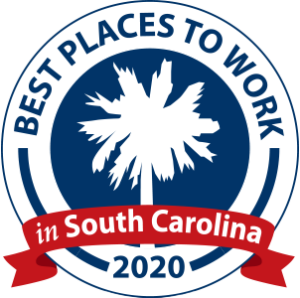
Both the County and City of Greenville are developing plans to envision what our community will look like in the year 2040. These masterful and comprehensive plans look at everything from transportation to education to quality of life to diversity to housing. Hundreds of hours have been spent by countless community members hammering out parts of the plan, which await approval from their respective governing councils.
All of these issues funnel back into economic development, which not surprisingly, is its own category for the plans. There were 294 separate comments on social media regarding the proposed County Comprehensive Plan on economic development, which underscores its importance and places emphasis on the amount of attention these plans are drawing.
The county plan also predicts an additional 200,000 residents in Greenville – inching us to about 700,000 people by the time 2040 rolls around. While job growth is robust currently, the county plan really doesn’t look at what kind of jobs those people might have, and how businesses might better prepare for these jobs and potential scaled organizational growth.
So, let’s talk about a job sector that Greenville and the state is struggling in that is vital for future growth.
South Carolina has close to 120,000 tech industry employees, which is about 5.8 percent of our entire work force. That is 34th in the nation, which means we have a lot of ground to make up. In comparison, more than 100,000 workers in Charlotte have jobs in tech, either working for one of the city’s 4,228 tech firms or as IT professionals at local businesses, accounting for 8.1% of the city’s workforce.
But why do tech jobs matter for the future? These tend to be higher paying jobs, which help raise the per capita income of Greenville. That in turns creates more buying power to fuel local service industries such as retail and restaurants, and provide long-term stability to the Upstate economy.
That is why talent recruitment is such a key part of Greenville’s economic future. As one of the leading software developers in the state, Kopis knows the importance of attracting and maintaining tech talent for the vibrancy of the local economy and we (as do other tech companies in the Upstate) have begun utilizing the following concepts to appeal to nation-wide talent. For those reasons, we recommend that tech companies use their greatest assets in their recruiting process to attract the best applicants. Some that we use and your company can as well.
- Location, Location, Location: Greenville is a wonderful city in which to live and work. That is a major selling point to young tech workers. It’s stronger than most people realize.
- Unbeatable Corporate Culture: Things such as flexible work hours and potential to work from home offer employees the flexibility to manage their lives and create a work schedule that works, puts family first and is a great benefit to existing and new employees. We created a social committee that plans activities that build our team spirit. From happy hours, to rebuilding homes in the community, what we do together after work hours are a big part of who we are as a team.
- Hire and Recruit Local: Not only is the majority of our work force from right here in the Upstate, we are also beginning the process of working with local colleges to keep the young talented tech work force here in town post graduation.
Other conversation topics that help generate talent interest to your company include benefits (traditional and non-traditional), for example, at Kopis we discuss our healthcare plans, but also the wellness reimbursement stipend and direct primary care options as well as use employee case studies to show how employees utilized company-financed educational opportunities to grow as professionals based on their interests and needs.
Lastly, the biggest part of the conversation always is the money. Greenville’s the little kid in the “tech” sandbox compared to our neighbors Charlotte and Atlanta, but we can hold our own when it comes to talent retention. Kopis targets our pay above the median for the roles we are looking to fill. This helps keep top talent around.
It’s the cohesive responsibility of the technology community to be drafting strategy around building our future talent workforce, by investing in local talent-banks today. M


